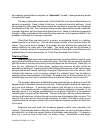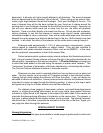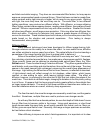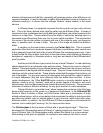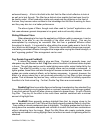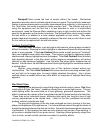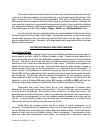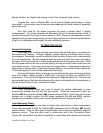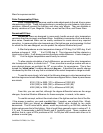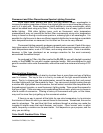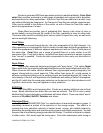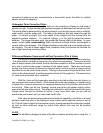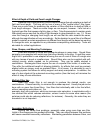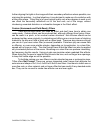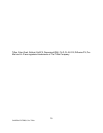
CAMERA FILTERS © Ira Tiffen
16
correction to balance out any unwanted bias in these other areas, the effect on reddish
objects will still be apparent.
Underwater Color Correction Filters
When imaging underwater, the light you are recording is filtered by the water it
passes through. Longer wavelength reds and oranges are absorbed until only blue is left.
The actual effect is determined by numerous factors, such as light source (sun or artificial),
water quality, and the water path. The latter is the distance the light travels through the
water. In natural (sun)light, this is the depth of the subject from the surface plus the
subject-to-camera distance. For artificial lighting, it is the light-to-subject-to-camera
distance. The longer the water path, the greater the filtering effect of the water. In many
cases, certain color compensating filters can absorb enough shorter wavelengths to
restore better color balance. The difference between corrected and uncorrected color can
be dramatic. The use of faster speed films, cameras (video) and lenses will facilitate the
use of light absorbing correcting filters.
Differences Between Camera and Lab/Post Correction (Film & Video)
It is the job of the lab timer to fine-tune the finished color rendition of the production.
This accounts for variables in exposure, print stock and processing. Timing can also be
used to impart certain color effects, both for densities available in the film emulsion to work
with, and is limited to the range of variation of the optical printer. These are much more
limiting than the multitude of colorants in the real world, and the number of ways in which
adjustments can be made at the camera. Filtering on the camera brings the lab that much
closer to the desired result, providing a greater latitude of timing options. The same is true
for video post-production color correction.
With film, there will be times when counting on the lab is either the only choice, or
can produce some unusual effects. When faced with a low light situation, in daylight using
tungsten film, it may be necessary for exposure reasons to pull the 85 filter and correct in
the printing. When you do this, however, neutral gray tones will appear slightly yellow,
even when all else looks correct. This effect can be used to artificially enhance lush green
foliage colors through the addition of yellow. It may have other uses, but you will not
achieve the same result as if you had used the 85 filter.
With video cameras having internal white balance capability, use filters to at least
partially correct the color of the lighting to more closely match what the camera is set up
for. This will make it easier for the camera circuitry to accommodate the correction needed,
as well as allow additional range for further color effects that may not be possible
otherwise.
LL-D®
The LL-D was designed to help in the above situation primarily when using film. It



